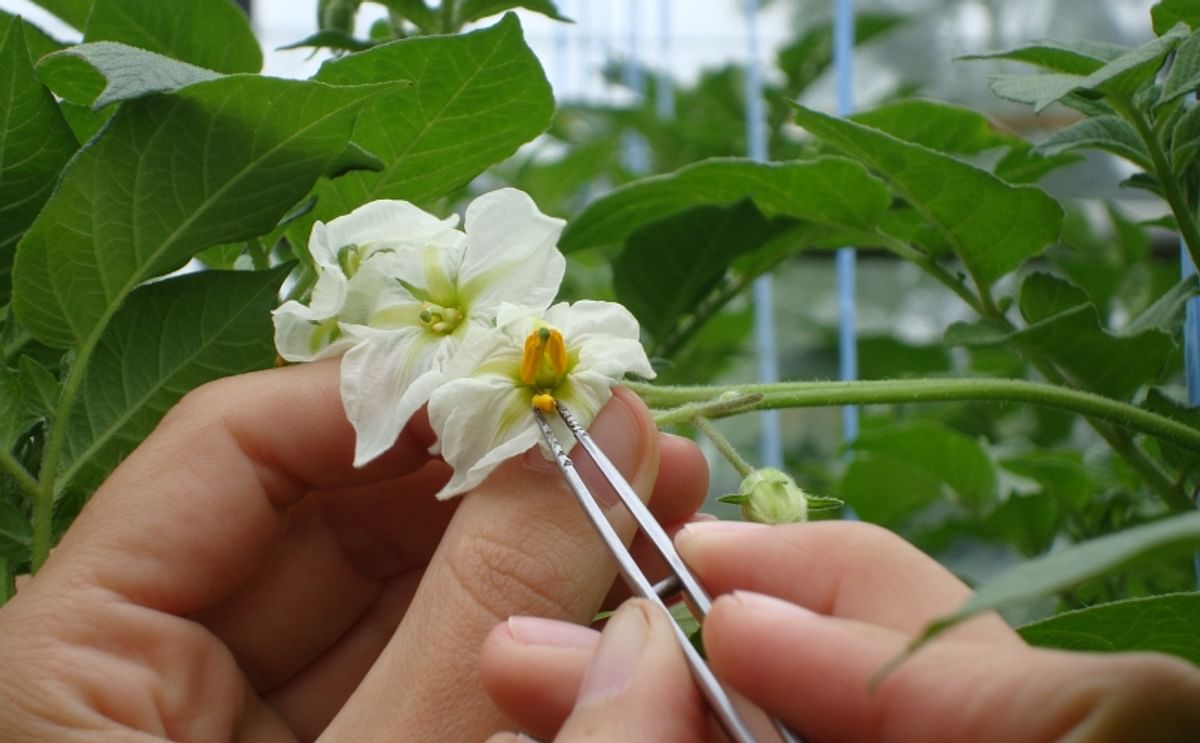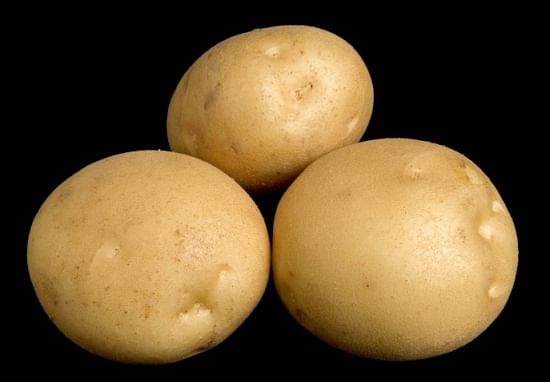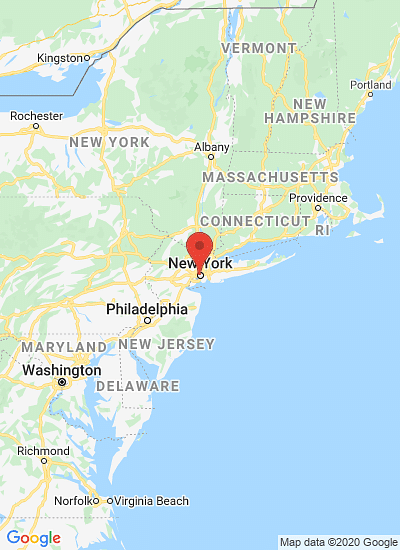At the beginning of the breeding process, you decide what kind of potato variety you hope to make. You cross the parents that have complementary characteristics by taking pollen from one of the potatoes and putting it on the flower of the other.
(Courtesy: CRA-W)
Potato Breeding at Cornell University: an update

Walter De Jong, Associate Professor at Cornell University’s School of Integrative Plant Sciences, Plant Breeding and Genetics Section, has been researching potatoes at Cornell for more than 15 years. Potatoes have been bred at Cornell for at least 50 years, De Jong says, and 70% of the university’s breeding efforts are focused on developing new chip varieties, while 30% is dedicated to various fresh market classes.
The program primarily breeds varieties suitable for the Northeast, or within a 500-mile radius of the breeding facility in Ithaca, NY.
Breeding efforts differ for fresh and processed markets. For the fresh market, areas of interest include developing varieties that look attractive, taste good, and yield well enough that growers will want to grow them, according to De Jong.
Walter De Jong:
“For chipping varieties, we’re trying to develop round, white varieties that have relatively high starch content that don’t accumulate much sugar during cold storage”
Pathogen Resistance Push
Cornell’s breeding program has been incorporating pathogen resistance into as many varieties as it can, and one of the more recent areas of focus has been breeding resistance to Potato Virus Y (PVY), De Jong says.
Walter De Jong:
“We want to incorporate PVY into as many potatoes as we can for both chipping and fresh markets.”Another major area of concern is breeding resistance for a new race of golden nematode, Ro2, which has been found in Long Island and upstate New York.
“There are new strains of PVY that can cause tuber necrosis. Reducing yield is one thing, but making tubers unmarketable is another. There are several resistance genes that have been brought in from wild, cultivated species from South America that other breeders are trying to incorporate.”
The original race of golden nema-tode, Ro1, is a quarantined pest in New York, and nearly every variety that Cornell has produced within the last 30 years has incorporated resistance to the pest, De Jong explains. However, the new race, Ro2, has not responded to conventional resistance, so researchers at Cornell have been striving to incorporate resistance to the new race since 2000.
Chipping Varieties
As mentioned, with chipping varieties, the primary focus is developing ones that don’t accumulate sugar in the cold weather and can be stored for a longer period than previously possible, De Jong says.
With harvest starting in mid-August, De Jong says the goal is to have varieties that can still be made into chips by May or June of the following year.
Two varieties Cornell released about five years ago that have shown promise in this category are ‘Lamoka’ and ‘Waneta.’
Walter De Jong:
“They both have outstanding chip color when fried out of the cold, which is a trait that’s important in the industry.”

Two chipping varieties Cornell released in the last few years that have shown promise are ‘Lamoka’ (shown above) and ‘Waneta.’ (Courtesy: Walter De Jong)









